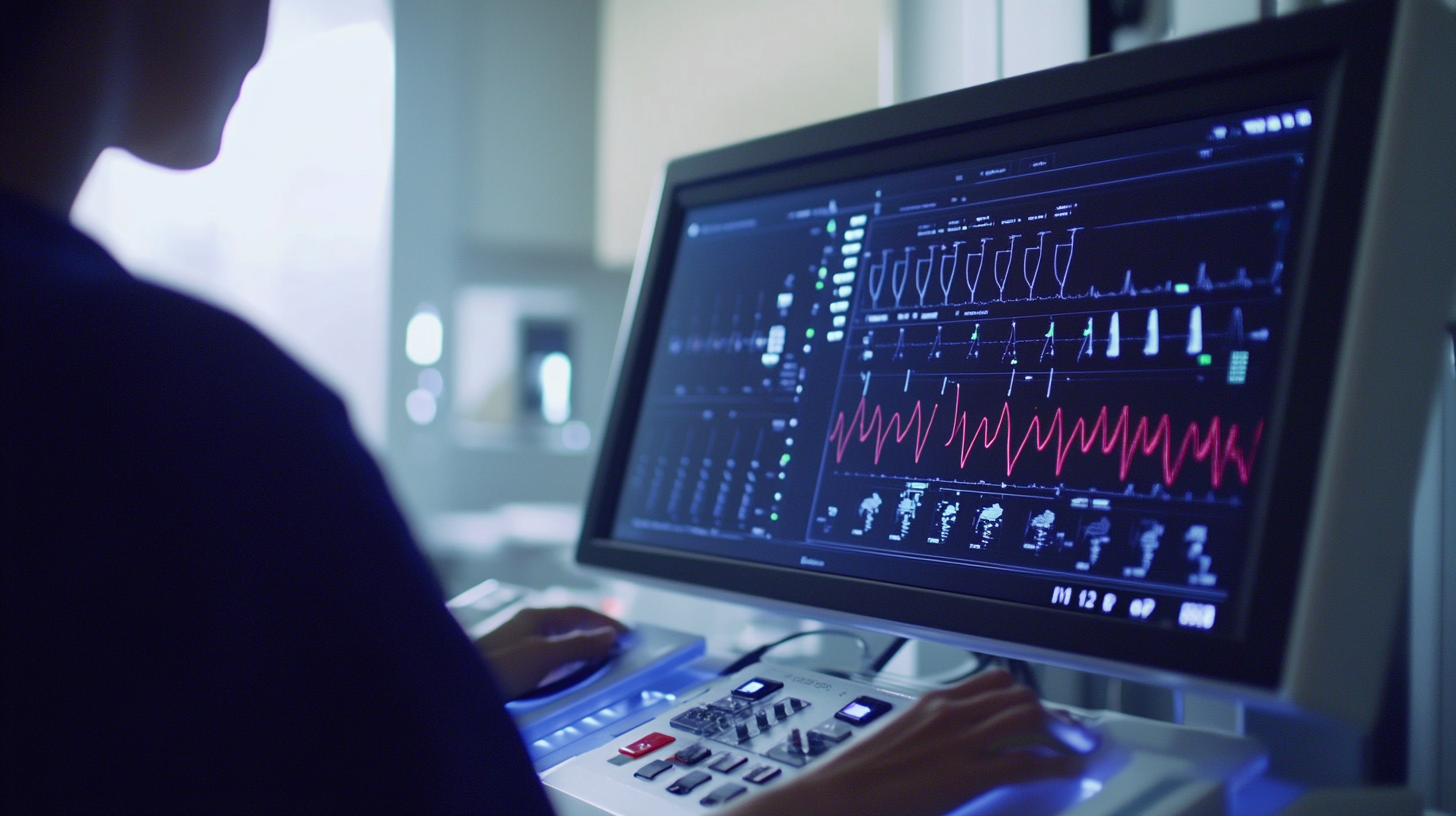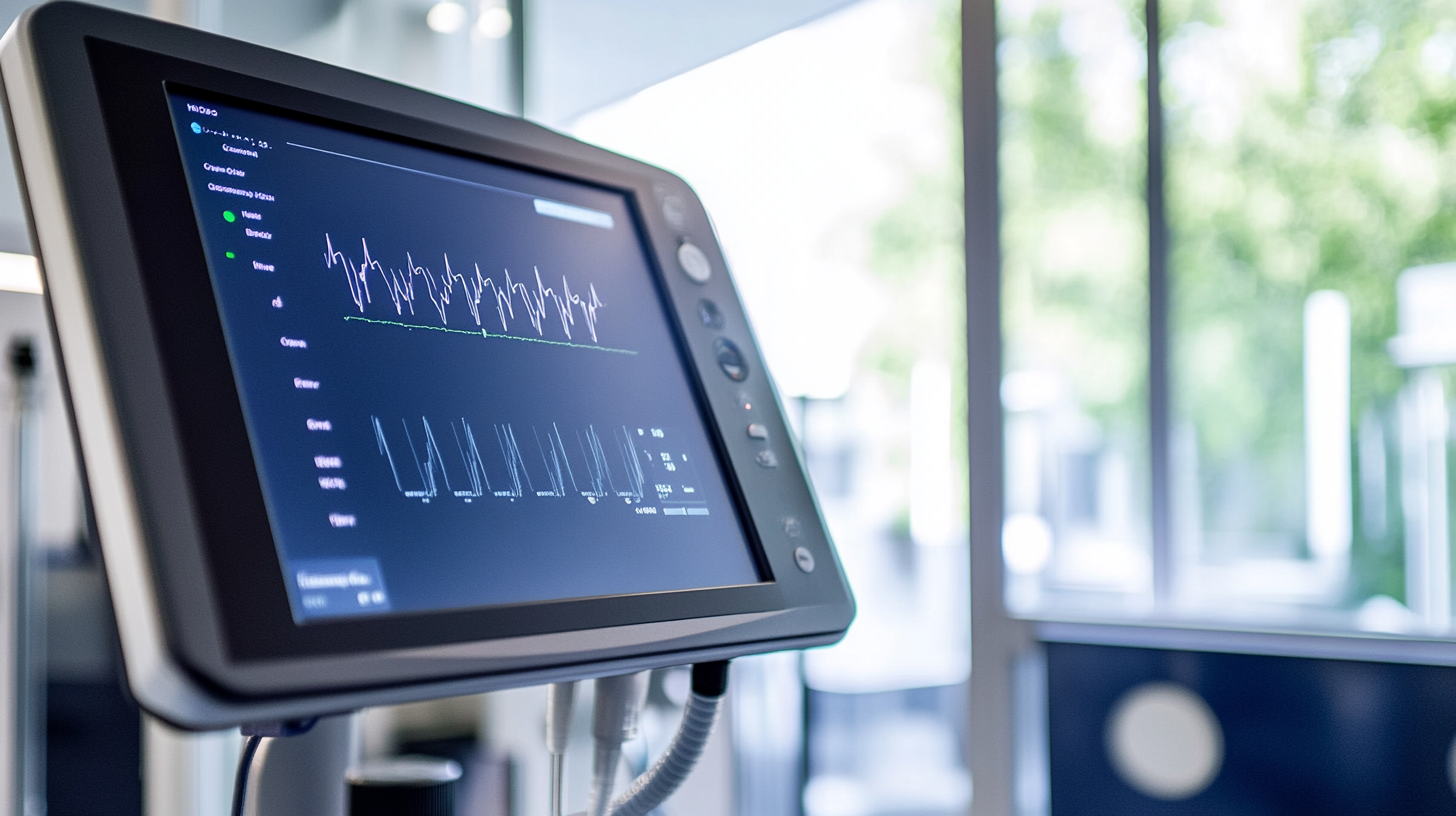Bankim Nagar, Siliguri, West Bengal
- GST NO. : 19BHDPS7640K1ZR
Unlocking the Potential of the Best EMG Machine: Technical Specs & How to Optimize Performance for Global Buyers
In the ever-evolving field of electromyography, the demand for high-performance EMG machines has surged, driven by advancements in medical technology and a growing emphasis on accurate diagnostics. According to a recent market analysis report by Research and Markets, the global electromyography market is projected to reach $1.14 billion by 2025, reflecting a compound annual growth rate (CAGR) of 6.8% from 2020. This boom is not merely a trend; it underscores the critical role EMG machines play in clinical evaluations, rehabilitation, and neuromuscular research. As global buyers seek to unlock the potential of these devices, understanding the technical specifications and optimizing their performance becomes imperative. This blog aims to provide insight into the best EMG machines available, guiding professionals through the intricacies of their functionality to ensure they select the ideal equipment for their specific needs.

Understanding the Anatomy of High-Performance EMG Machines for Global Markets
The high-performance electromyography (EMG) machines are revolutionizing the way healthcare professionals analyze muscle activity. Understanding the anatomy of these cutting-edge devices is crucial for global buyers looking to leverage their capabilities. High-quality EMG machines typically consist of three key components: electrodes, amplifiers, and data acquisition systems. Each part plays a vital role in ensuring accurate readings and reliable performance. The electrodes capture electrical signals from muscles, while the amplifiers refine these signals to eliminate noise. Lastly, sophisticated data acquisition systems convert the analog signals into digital data for detailed analysis.
Optimizing performance goes beyond just selecting the right machine; it involves understanding the specific application and the environment in which the EMG device will be used. For instance, certain settings may require high sampling rates for dynamic muscle analysis, while others may prioritize portability and ease of use. Global buyers must consider their target market’s needs, such as regulatory compliance and user training, to ensure they maximize the machine’s potential. By focusing on these technical specifications and their implications, buyers can make informed decisions and enhance the effectiveness of their EMG diagnostics.

Key Technical Specifications That Define the Best EMG Machines in the Industry
When it comes to selecting the best EMG machine, understanding key technical specifications is crucial for maximizing performance. The most pivotal features include signal accuracy, electrode configuration, and sampling rate. High signal accuracy ensures that muscle activity is captured precisely, enabling reliable diagnostics. A versatile electrode configuration allows for both surface and intramuscular applications, catering to diverse clinical needs. Meanwhile, a high sampling rate is vital to accurately represent fast muscle contractions, which is essential for comprehensive analysis during physical therapy or research settings.
Additionally, user-friendly software and connectivity options should not be overlooked. The best EMG machines come equipped with intuitive software that simplifies data analysis, allowing practitioners to interpret results effectively. Integration with other medical devices and compatibility with different platforms ensure that the data collected can be easily shared and analyzed within larger healthcare systems. By prioritizing these technical specifications, global buyers can select an EMG machine that not only meets their clinical requirements but also enhances their overall practice efficiency, ensuring optimal treatment outcomes for their patients.
Performance Comparison of Top EMG Machines
This chart compares the key technical specifications of top EMG machines in the industry, highlighting their channel count, sampling rate, maximum input voltage, noise level, and dynamic range, making it easier for global buyers to understand the performance capabilities of different products.
Comparative Analysis: Leading EMG Machines and Their Market Positioning Worldwide
 When evaluating the landscape of electromyography (EMG) machines, it's essential to comprehend how various models position themselves in the global market. Leading manufacturers have crafted their devices to cater to specific needs, creating differentiated offerings that appeal to clinicians, researchers, and rehabilitation specialists. For instance, some brands focus on high sensitivity and resolution for neuromuscular research, while others prioritize portability and ease of use, addressing the needs of practitioners in diverse settings.
When evaluating the landscape of electromyography (EMG) machines, it's essential to comprehend how various models position themselves in the global market. Leading manufacturers have crafted their devices to cater to specific needs, creating differentiated offerings that appeal to clinicians, researchers, and rehabilitation specialists. For instance, some brands focus on high sensitivity and resolution for neuromuscular research, while others prioritize portability and ease of use, addressing the needs of practitioners in diverse settings.
A comparative analysis reveals distinct market strategies among the top EMG machines. High-end models often emphasize advanced features such as wireless connectivity, real-time data analysis, and enhanced software integration, making them appealing for academic and clinical research. Conversely, budget-friendly options are gaining traction in developing regions, enabling access to essential diagnostic tools without compromising on quality. This strategic diversity in positioning allows global buyers to choose EMG machines that best meet their operational requirements, ultimately unlocking the potential for enhanced patient care and innovative research methodologies across varied contexts.
Best Practices for Optimizing EMG Machine Performance in Clinical and Research Settings
Electromyography (EMG) machines play a crucial role in both clinical and research settings, providing valuable data on muscle activity and neuromuscular disorders. To maximize the efficacy of these machines, understanding their technical specifications and optimal usage practices is essential. According to a recent report by HCP Insights, the global EMG market is projected to reach $2.5 billion by 2026, signaling a growing emphasis on superior equipment and performance.
When utilizing EMG machines, clinicians and researchers should adhere to best practices to ensure precise data collection. One key tip is to maintain consistent electrode placement; research indicates that variations in electrode positioning can lead to discrepancies in data interpretation. Additionally, optimizing the equipment’s gain settings according to the specific muscle group being studied can enhance signal clarity, as highlighted in a Journal of Neurophysiology study showing a 30% improvement in signal detection with proper gain adjustments.
Furthermore, regular maintenance and calibration of EMG machines are vital. A comprehensive review published in the Clinical Neurophysiology journal emphasizes that routine checks can prevent drift in signal quality, ensuring the reliability of recordings. Implementing these practices not only enhances the performance of EMG machines but also supports accurate diagnoses and better patient outcomes.
Unlocking the Potential of the Best EMG Machine: Technical Specs & How to Optimize Performance for Global Buyers
| Parameter | Description | Best Practice |
|---|---|---|
| Sampling Rate | Frequency at which signals are recorded (Hz) | Use >= 1000 Hz for accurate muscle activation analysis |
| Signal Bandwidth | Range of frequencies captured from the muscle activity | Set between 10 Hz and 500 Hz for optimal results |
| Number of Channels | Number of muscle sites that can be monitored | Use multiple channels (4-16) for comprehensive data collection |
| Noise Reduction Techniques | Methods implemented to reduce signal interference | Incorporate hardware and software filtering solutions |
| Data Analysis Software | Programs used to interpret EMG data | Select user-friendly software with robust statistical features |
| Calibration Procedures | Methods to ensure accurate readings | Perform regular calibrations per manufacturer guidelines |
Future Trends: Innovations in EMG Technology and Their Global Impact on Healthcare
The future of EMG technology is poised to significantly impact global healthcare, particularly in rehabilitation and therapy. Advances in EMG machines, driven by the integration of artificial intelligence and machine learning, are enhancing the precision of neurological assessments.
As highlighted in current trends, the global EMG biosensors market is projected to expand, reflecting a growing reliance on these technologies amid increasing neurological health challenges post-pandemic. This development paves the way for improved patient outcomes and more personalized treatments.
Furthermore, innovations in wearable biosignal sensors are revolutionizing how healthcare providers monitor patient conditions in real-time. The convergence of EMG devices with IoT enables seamless data collection and analysis, leading to more timely interventions and better management of chronic musculoskeletal disorders.
As healthcare systems adapt to these technological advancements, it is crucial for global buyers to consider the technical specifications and performance optimization of EMG machines to ensure they meet the evolving demands of modern healthcare environments.

